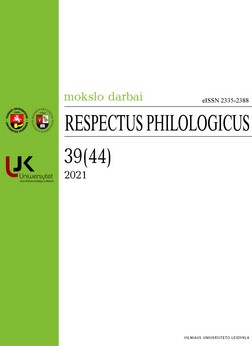Apozycje metajęzykowe w zabytkach języka polskiego
Metalinguistic Apositions in the Monuments of the Polish Language
Author(s): Piotr ZbrógSubject(s): Syntax, Semantics, Historical Linguistics, Western Slavic Languages
Published by: Vilniaus Universiteto Leidykla
Keywords: apposition group; metalinguistic apposition; Old Polish language;
Summary/Abstract: Monuments of the Polish language contain numerous examples of apposition groups of the type jezioro Błędno, imię Bartłomiej, miasto Betsaida, Maryja, match Boża, królewna Nebraska, Jesusa Krysta syna Dawidowego, Bogu Oćcu. Metalinguistic appositions refer to intra-textual elements, e.g. słowo Pokłada, słowo Betanija, imię Jan, imię Fryzon. The article focuses on an overview and description of expressions of this type from the formal point of view (internal structure, grammatical features of the members), semantic (issues of the connotation of the basis of apposition and apposition, denotation, function) and syntactic (deep structure, the arrangement of members, syntactic accommodation). As it turned out, these groups were, to a large extent, shaped in terms of their specific features in the oldest Polish language and have preserved them until the present times. In semantic and grammatical terms, contemporary constructions of the word Sometime or the name Piotr imitate the old Polish groups, such as the słowo Zawżdy or the imię Bartłomiej. They are connoted on both sides, characterized by inclusion and restrictiveness of appeals. Appeals are not accommodated; expressions have a strict chord and are derived from the use of elements SOUND or HAVE A CHARACTER. Even today, they appear extremely rarely in the texts.
Journal: Respectus Philologicus
- Issue Year: 2021
- Issue No: 39(44)
- Page Range: 21-31
- Page Count: 11
- Language: Polish

